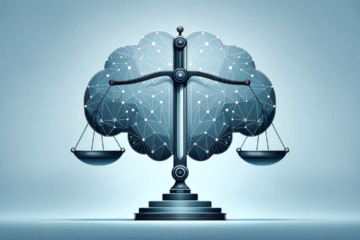
This article is written by Saloni of Department of Laws, Bhagat Phool Singh Mahila Vishwavidlaya, Khanpur Kalan, an intern under Legal Vidhiya
ABSTRACT
This article presents all-inclusive synopsis about the preamble of the Indian constitution. Preamble is essentially a preparatory statement which tells us the fundamental idea and objectives behind the document. As we already know that the constitution is a set of rules, principles or course of action on the basis of which the government of the country or institutions works whether the citizen or the governments all have to work within the limits of the constitution. Constitution can either be written or unwritten. Approximately 188 countries have their own constitution. Out of 195 countries of the world have their own written constitution. Countries without the written constitution are namely UK, Canada, Israel Saudi Arab, New Zealand. Out of these 190 countries 70% of these countries’ constitution starts with the preamble
Keywords: Objective resolution, sovereign, secular, socialist, democratic, republic, justice, equality, fraternity and amendment to the preamble of the Indian constitution.
INTRODUCTION
[1]“It is the soul of the constitution. It is a key to the constitution. It is a jewel set in the constitution. It is a proper yardstick with which one can measure the worth of the constitution” —Pandit Thakur Das Bhargava
The preamble is also called the soul of the constitution. Firstly the question comes to our mind that what is a preamble? We often noticed that every statute or legislation made by the parliament comes along with the preamble which gives the basic idea, objective or the basic purpose of the act or the legislation. The word preamble is derivative of a latin word ‘preambles’ which means walking before or to go before. It is an opening statement which tells us regarding the purpose viewpoint, inspiration and aspirations, ideology and objectives. In the same way the preamble of the Indian constitution refers to the introduction or preface to the constitution containing the summary or essence of the constitution. America was the first country who integrated preamble in their constitution. The preamble gives a scheme about the sources of the constitution, nature of the Indian state, a statement of its objectives and the date of its adoption.
DRAFT OF THE PREAMBLE
[2]The preamble of the constitution of India is based on the objective resolution drafted by Pandit Jawaharlal Nehru. The objective resolution was moved on December 13, 1946 by Pandit Jawaharlal Nehru. The preamble or the prologue of the constitution provides the indispensable guiding values, values or give an about the intellectual framework of the makers of the constitution or express their opinion while drafting the constitution. These philosophy or guiding principles afterward took the appearance of the preamble of the constitution of India.
The resolution states–
- The Constituent Assembly seriously decides to announce India as an independent and sovereign republic and to draft a constitution for the governance of the nation.
- The resolution states that the Constitution will set up a union comprising the territories of British India, the Indian States, and other parts of India willing to join, to make India a united state.
- The territories with their current boundaries or as determined by the Constituent Assembly will retain their sovereign status.
- All power and authority of the independent India are derived from the people whether it is constituent parts or governmental bodies.
- [3]The Constitution guarantees justice and various social, economic, and political rights to all people within the territory of India without any discrimination. The constitution of India also provides sufficient safeguards for minorities, backward and to deprived people and to the people of tribal areas and other backward classes.
- It also states that the veracity and the sovereign rights of the territory over the land, water, sea and air will be maintained in conformity with the provisions of the international law.
- With the incorporation of these provisions, India seeks to achieve its equitable and esteemed position in the world, contributing enthusiastically to the endorsement of global peace and the welfare of humanity.
CONTENT OF THE PREAMBLE OF THE CONSTITUTION
[4]The text of the preamble of the Indian constitution states that:
WE, THE PEOPLE OF INDIA, having solemnly resolved to constitute India into a [SOVEREIGN SOCIALIST SECULAR DEMOCRATIC REPUBLIC] and to secure to all its citizens:
JUSTICE, social, economic and political;
LIBERTY of thought, expression, belief, faith and worship;
EQUALITY of status and of opportunity and to promote among them all;
FRATERNITY assuring the dignity of the individual and the [unity and integrity of the nation];
IN OUR CONSTITUENT ASSEMBLY this sixth day of November, 1949 to do HERE ADOPT, ENACT AND GIVE TO OURSELVES THIS CONSTITUTION.
The preamble gives an idea about the following:
- The source to the constitution
- The nature of the Indian state
- A proclamation of its objective and
- The date of its adoption
SOURCE OF THE INDIAN CONSTITUTION
[5]The foundation of the preamble of the Indian constitution can be traced in various constitutional documents. It can be traced in the objective resolution offered by pandit Jawaharlal Nehru on December 13,1946 in the constituent assembly. The preamble of the Indian constitution is inspired from the preamble of the united state of America. It is also inspires from the French revolution the principles of liberty, equality and fraternity finds its origin from the French revolution. The idea of federal structure is borrowed from Canada
“WE THE PEOPLE OF INDIA …….”
As per this phrase “we the people of India” emphasis that the constitution is made by and for the Indian people and not given to them by any external power/ authority. [6]It also emphasizes the concept of popular sovereignty as laid down by Rousseau.
Secondly the preamble of the Indian constitution describes the nature of Indian states. It describes India a sovereign, socialist secular democratic and republic. All these words mentioned in the preamble have special significance and different meaning. So let’s first understand the meaning of these words in order to understand the preamble well.
SOVEREIGN:
The word sovereign is resulting from the Latin word ‘SUREANUS’ which means ultimate authority. A state is said to be sovereign if a state is supreme authority within the definite territorial area. Sovereignty can be classified into two categories external or internal sovereignty. External sovereignty means that the state conducts its own affairs without any interference of other states. On the other hand internal sovereignty means that the state has supreme authority over all individual and associations within its territorial boundary.
India became sovereign state on 26 January 1950 when the constitution is implemented. In esteem of our preamble the meaning of sovereign is that the India is an autonomous state. India is neither a dependency nor a dominion of any other nation but an independent state. There is no authority above it and it is free to conduct its own affairs both internal and external. India is a part of numerous organizations like UNO and Common wealth nations. Now the question arises being the member of these organization has India compromises its sovereignty? No India became the part of these organizations by its own choice and organization as per its own choice and can leave these organizations as per its own preference. By being the member of these organizations India do not compromise its sovereignty India still remain sovereign because the decision of these organizations is not binding on India.
SOCIALIST:
This word is integrated in the preamble by the 42nd amendment act 1976. In modern society there are mainly two types of economic systems- capitalist economic system and socialist economic system. In the capitalist economis system industry and trade are controlled by the private owner. The socialist economic system is further classified into two: Marxist and Gandhian socialism.
Indian socialism leans heavily on Gandhian Socialism. So our country’s socialism is recognized with a new term ‘DEMOCRATIC SOCIALISM’ which aims to eradicate poverty, ignorance, disease and inequality of opportunity.
SECULARISM:
We might have noticed sometime that some countries like Pakistan, Afghanistan, Bangladesh has state religion that is Islam Bhutan and Shri Lanka has Buddhism as its state religion. On the other hand Nepal till 2007 is a Hindu state but now it has no state religion. India is a secular state and has no state religion. Secular state is that state where no religion is affirmed as a state religion. The word ‘SOCIALIST’ & ‘SECULARISM’ were added to the preamble after the 42nd amendment. Part IV, directive principles of state policy provide socialist character to our constitution and article 25-28 of part III of fundamental rights provide secular character to the constitution. But these two words were not initially mentioned in the preamble of the constitution these words found to be missing. So in the year 1976 by the 42nd amendment these two words added to the preamble.
Secularism means that the state has no religion of its own and all persons will be equally entitled to the freedom of conscience and the right freely to profess, practice and propagate the religion of their choice.
DEMOCRATIC:
It is made up of two Greek words ‘Demos’ and ‘kratia’. ‘Demos’ means people and ‘Kratia’ means rule so the word ‘DEMOCRATIC’ means the rule of people. Democratic countries are those countries where the rule of people prevails. Democracy may be further classified into two- direct and indirect. Direct democracy signifies where people participate directly in the policy making. On the other hand in the indirect democracy the representatives are elected by the people participate in the policy making on the behalf of the people.
The word ‘DEMOCRATIC’ mentioned in the preamble indicates the constitution has established a form of government that gets its authority from the will of the people. The rulers are elected by people and are accountable to them.
REPUBLIC:
As disparate to a monarchy, in which the state is appointed on the hereditary basis for a lifetime. A democratic republic is an entity in which the head of the state is elected, directly/indirectly for a fixed tenure. The President of India is chosen by the Electoral College to serve a term of office of 5 years. The office of President of India is non-hereditary.
OBJECTIVES OF THE INDIAN STATE:
The words mentioned in the preamble of the Indian constitution like- justice, equality, liberty and fraternity describes the objective of the Indian state.
JUSTICE:
Justice is essential to maintain order in the society. Various provisions of fundamental rights and directive principles on state policy guarantee justice. It comprises three elements which is social, economic and political.
Social justice: Social justice is a promise of justice provided through fundamental rights and state-political ideals. It consists of three parts: social justice, economic policy, and political policy. Social equity: The Constitution strives to build a society free of discrimination based on caste, creed, gender, religion, and so on.
Economic justice: constitution of Indian contains some of the provision which provide economic justice to all the people without any discrimination on the basis of rich, poor class, caste creed or sex. Various provisions were incorporated in the part III of the constitution like every person has right to equal pay for same job without any discrimination on the basis of gender. It also provides that every person has equal opportunities to earn their living. It does not discriminate on the basis of wealth, income and economic status.
Political justice: it means all people have an equal, free and fair right without any discrimination to participate in political opportunities.
EQUALITY:
The term ‘equality’ means no segment of society has any special privileges and all people have given equal opportunities for everything without any favoritism Everyone is equal before the law. In case of infringement of any fundamental right the supreme court of India can be approached directly for decisive justice as per Article 32.
LIBERTY:
[7]“Man is born free and everywhere he is in chains” —— Jean Jacques Rousseau
The term ‘liberty’ means freedom for the people to choose their way of life a have political views and behavior in the society.
FRATERNITY:
Fraternity means sense of brotherhood, belongingness and emotional affection with one’s country fellow citizens. Fraternity contributes to promote nation’s dignity and cohesiveness. The system of single citizenship in our constitution fosters this sense of fraternity. Article 51-A says that it shall be responsibility of every citizen of India to promote harmony and the fraternity.
SIGNIFICANCE OF THE PREAMBLE:
The preamble of the Indian constitution is essential to the whole constitution because it provide the essence of the whole of the constitution. It Express the fundamental values on which the constitution is based. It also defines the aim and objectives of the constitution which our founding fathers wanted to achieve.
It lay down out the main purpose which the legislation is intended to achieve.
It also specifies the sources from where the constitution has come-the people of India. It reflects the sovereignty of the people
It holds the enacting clause which bring it into force the constitution
It is a set of introductions to the statute & many times very useful to understanding the policy and legislative intent.
STATUS OF PREAMBLE
The question now is, is the preamble a part of the constitution? This issue is addressed in the Supreme Court’s several decisions. It was used as a reference under 143(1) of the constitution in the Berubari union case, which was on the implementation of the Indo-Pakistan agreement connected to Berubari union and trading the enclaves that were decided for consideration by the bench of 8 justices. The court used the Berubari case to open the minds of the creators, but it cannot be deemed a part of the constitution. As a result, it is not legally enforceable.
[8]Keshvananda Bharti case in this case for the first time, a bench of 13 judges was assembled to hear a writ petition. In this case the Supreme Court rejected earlier opinions and held that the preamble is part of the constitution and can be amended under Article 368 it was held that the preamble is not the supreme power/ source of any restriction or prohibition but it plays an important role in the interpretation of statute and provisions of constitution.
[9]L.I.C. Of India & Anr vs Consumer Education & Research the Supreme Court has once again held that the preamble is the integral part of the constitution but is not directly enforceable in a court of justice in India.
AMENDMENT TO THE PREAMBLE
The preamble of the constitution is amended in the year 1976 by the 42nd amendment act 1976. After the judgement of the Keshwanand Bharti case it was accepted that the preamble is part of the constitution. Article 368 of the constitution allows for amendments to the preamble as part of the constitution, but not to the core form of the preamble
CONCLUSION:
As result I’d made a conclusion that the preamble is the part of the constitution as decided by the Supreme Court in the judgement of Keshvananda Bharti case. The Supreme Court had held that the preamble is the essence of whole of the constitution. It further said that it can be amended under article 368 it helps in the interpretation of the statute and legislation but it not only the supreme power. Hence it can be concluded that the preamble is the introductory statement which gives an idea about the underlying principles and values given in the constitution. It is amended once by the 42nd amendment act 1976.
[1] Preamble – INSIGHTSIAS. (2021b, September 10). INSIGHTSIAShttps://www.insightsonindia.com/polity/indian-constitution/significant-provisions/preamble//
[2] Admin, & Admin. (2023a, July 10). THE CONSTITUTION OF INDIA – Legal vidhiya. Legal Vidhiya – Legal Vidhiya. https://legalvidhiya.com/the-constitution-of-india/
[3] Praful. (n.d.). 3ll_reservations_minorities. https://doccentre.net/docsweb/Education/reservations_minorities.html
[4] Constitution of India. (2023, March 30). Preamble – Constitution of India. preamble of the Indian constitution.pdf
[5] Sahiba. (2023b, June 22). Preamble of Indian Constitution Meaning, sources, and facts. /https://www.adda247.com/upsc-exam/preamble-of-indian-constitution/
[6] Ahmed, I. (2020, January 27). PREAMBLE TO THE INDIAN CONSTITUTION. The Siasat Daily. https://www.siasat.com/preamble-indian-constitution-1806375/,
https://www.siasat.com/preamble-indian-constitution-1806375/
[7] https://www.goodreads.com/quotes/52003-man-is-born-free-and-everywhere-he-is-in-chains
[8] (Kesavananda Bharati Sripadagalvaru and Ors v.Kesavananda Bharati Sripadagalvaru and Ors, 1973)https://main.sci.gov.in/jonew/judis/29981.pdf
[9] ( L.I.C. Of India & Anr vs Consumer Education & Research, 1995)https://indiankanoon.org/doc/1513693/




0 Comments